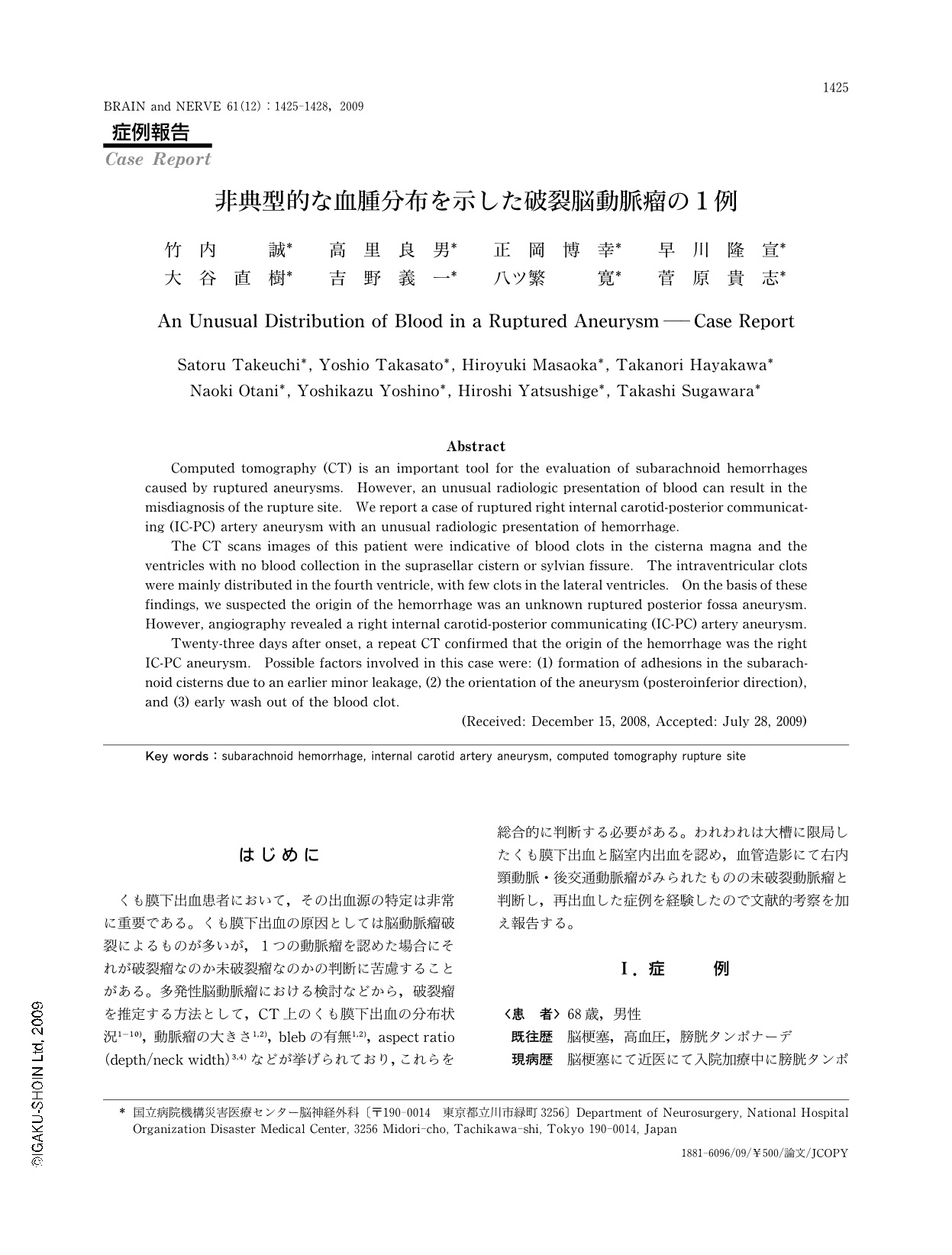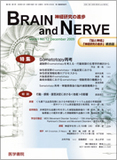Japanese
English
- 有料閲覧
- Abstract 文献概要
- 1ページ目 Look Inside
- 参考文献 Reference
はじめに
くも膜下出血患者において,その出血源の特定は非常に重要である。くも膜下出血の原因としては脳動脈瘤破裂によるものが多いが,1つの動脈瘤を認めた場合にそれが破裂瘤なのか未破裂瘤なのかの判断に苦慮することがある。多発性脳動脈瘤における検討などから,破裂瘤を推定する方法として,CT上のくも膜下出血の分布状況1-10),動脈瘤の大きさ1,2),blebの有無1,2),aspect ratio(depth/neck width)3,4)などが挙げられており,これらを総合的に判断する必要がある。われわれは大槽に限局したくも膜下出血と脳室内出血を認め,血管造影にて右内頸動脈・後交通動脈瘤がみられたものの未破裂動脈瘤と判断し,再出血した症例を経験したので文献的考察を加え報告する。
Abstract
Computed tomography (CT) is an important tool for the evaluation of subarachnoid hemorrhages caused by ruptured aneurysms. However, an unusual radiologic presentation of blood can result in the misdiagnosis of the rupture site. We report a case of ruptured right internal carotid-posterior communicating (IC-PC) artery aneurysm with an unusual radiologic presentation of hemorrhage.
The CT scans images of this patient were indicative of blood clots in the cisterna magna and the ventricles with no blood collection in the suprasellar cistern or sylvian fissure. The intraventricular clots were mainly distributed in the fourth ventricle, with few clots in the lateral ventricles. On the basis of these findings, we suspected the origin of the hemorrhage was an unknown ruptured posterior fossa aneurysm. However, angiography revealed a right internal carotid-posterior communicating (IC-PC) artery aneurysm.
Twenty-three days after onset, a repeat CT confirmed that the origin of the hemorrhage was the right IC-PC aneurysm. Possible factors involved in this case were: (1) formation of adhesions in the subarachnoid cisterns due to an earlier minor leakage, (2) the orientation of the aneurysm (posteroinferior direction), and (3) early wash out of the blood clot.
(Received: December 15,2008,Accepted: July 28,2009)

Copyright © 2009, Igaku-Shoin Ltd. All rights reserved.


